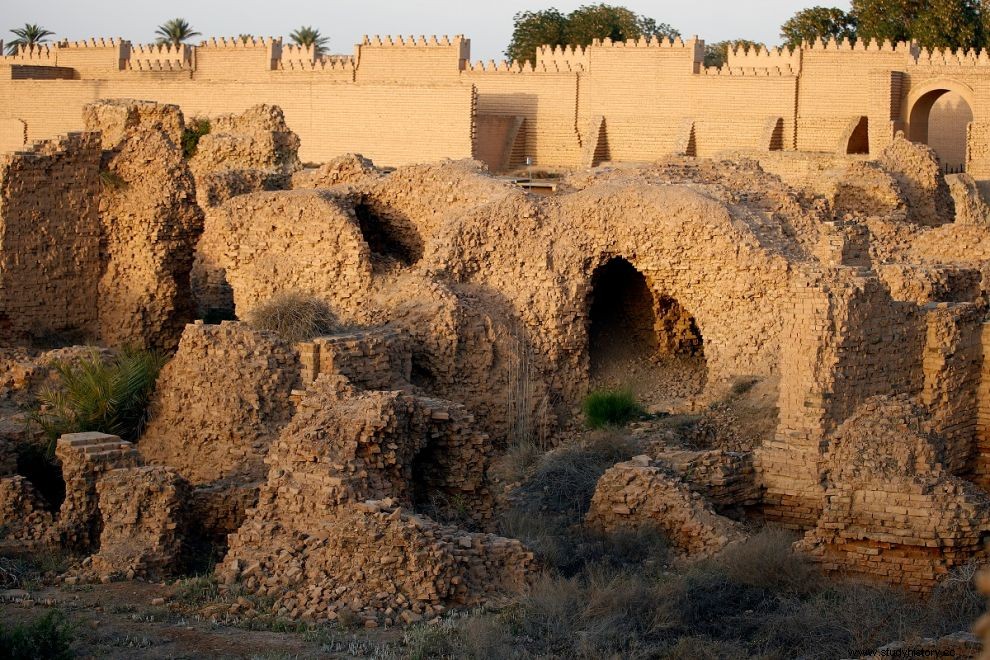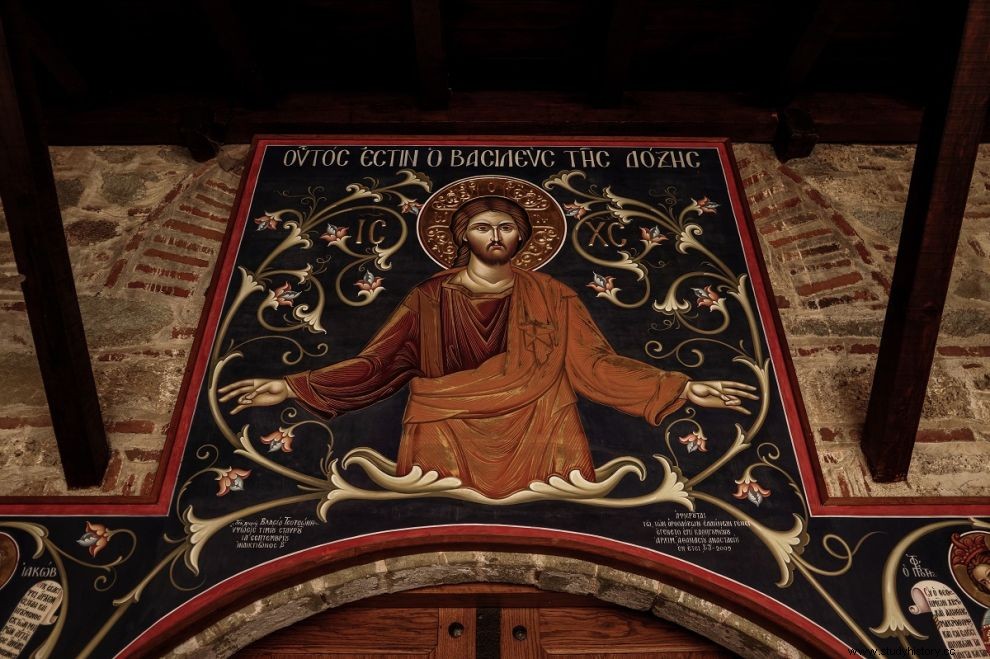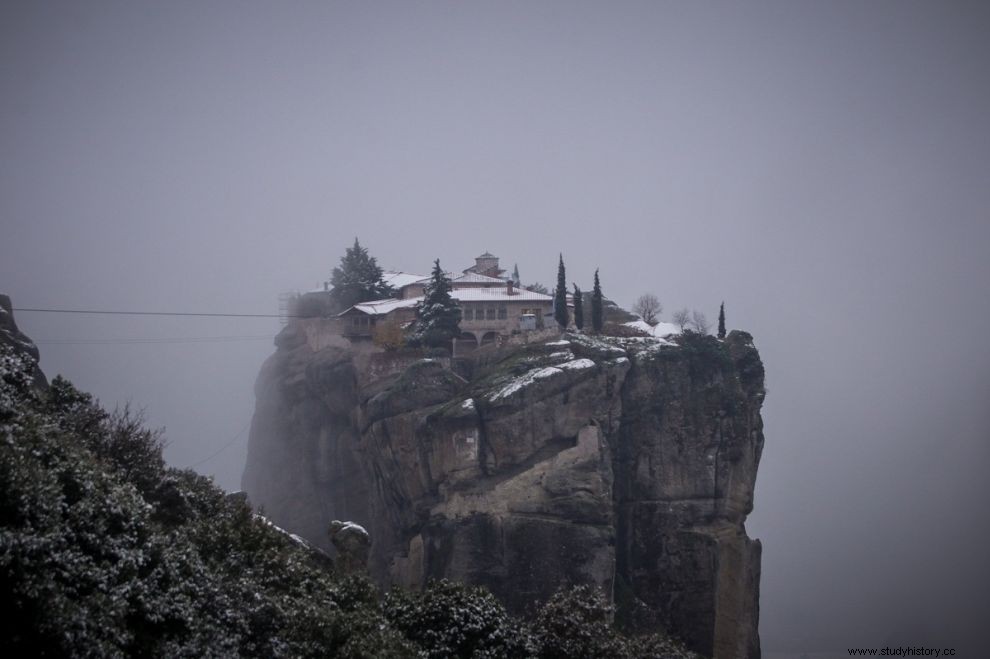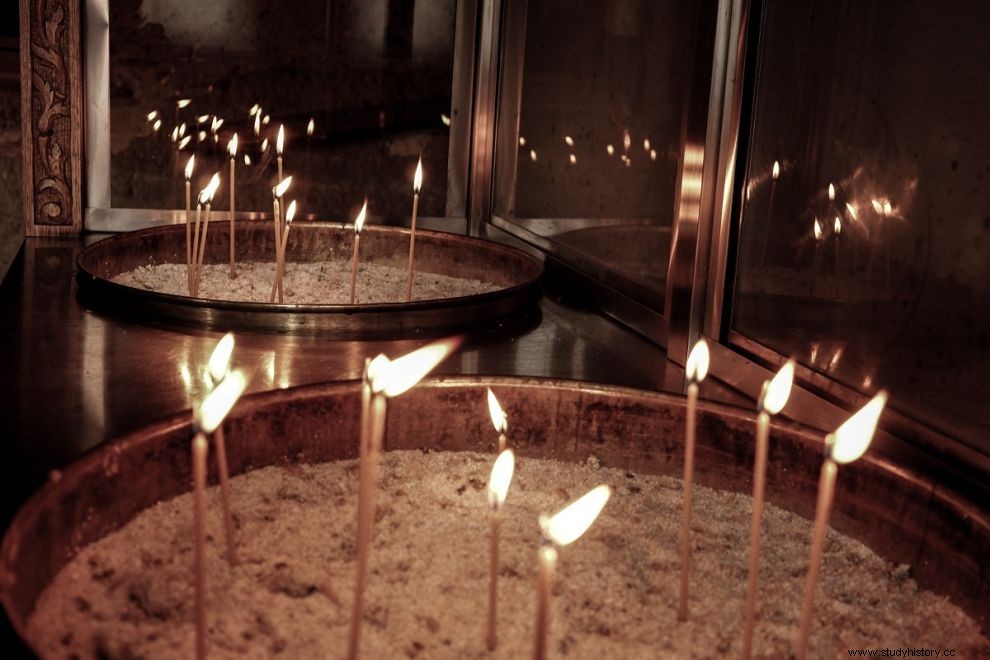It's a story so old, it makes even Christianity seem like a religion born yesterday. Demonism and therefore exorcism goes hand in hand with man's fear of the unknown, it survives to this day and because we do not know this "unknown" and if we will ever get rid of it, it seems that it has a long future ahead of it.
It might sound a bit like a folkloric remnant of another era or a medieval relic that lives only in the movies, but that's far from the truth. Exorcism is practiced even today, people approach priests to rid them of demons and not only in the Catholic Church, but also here, next to us, in 21st century Greece.
But what does the Holy Synod say about this practice and how do priests practice it today? Before we find out, it is good to do a little historical review, in order to understand why this phenomenon has such deep roots in our consciousness, which seems funny to some, but to others completely true.
Exorcism before Christianity
The idea that entities can enter the human body and possess it predates Christianity by thousands of years, and is found in cultures so ancient that they are lost in the depths of history.
In Babylon, for example, they had a deep belief in the existence of evil spirits, which was recently proved by the discovery of a curator of the British Museum. This man, almost two months ago, "discerned" the oldest known depiction of a ghost, in general, in the history of mankind. It was engraved on a 3,500-year-old ancient Babylonian tablet, which even included instructions for exorcism - and which had been discovered for decades.
The drawing found on the clay tablet depicts a disturbing bearded male ghost being led bound into the Underworld by a woman. According to the ritual engraved next to the drawing, the solution to removing it from the human body was to give it a mistress. The text of the ritual, in fact, ends with the command "don't look behind you!".
"This ritual would be applied I think in the case of a persistent household, possibly family ghost," the curator explained.
The instructions for a successful exorcism included spells, but also specific actions.
Invocations were usually directed to the sun god Shamash, who was responsible for the passage of ghosts to the Underworld. And the ritual was not to slaughter a rooster or jump 40 waves, but to bury the tablets with the spirits drawn on them, deep in the soil.

More generally in ancient Mesopotamian cultures, most illnesses were seen as demonic possessions of the body and therefore the sick person needed an exorcism to be cured. There is mention in necromantic texts that among the peoples of the region, it was the job of an exorcist to make a patient even stop grinding his teeth. How would he achieve this?
The healer believed that the ghost of a young family member was trying to communicate with the patient while he slept. So, in order to get the spirit out of him, he was advised to sleep for a week next to a human skull and if even this instruction did not work, he should kiss(!) and lick(!!!) the skull seven times every night.
Similar beliefs also existed in ancient Egypt - they even survive in some areas as "zar rituals" - and of course also in the Greco-Roman world. Especially in the latter, epilepsy was regarded almost exclusively as possession of the body by a demon.
In Lucian we find a passage about an exorcism, not "true", false for the needs of his "fiction", but based on the common practice of the time. According to this, a "professional" exorcist engages the demon in dialogue in his native language, forcing him to reveal his origin and the means he used to enter the foreign body. He then forces it to leave with spells ("swearing oaths") and threats. Those in front see the spirit leave in a puff of smoke.
Exorcism in the early years of the Church
The above practice is terribly reminiscent of the way and means used by the Roman Catholic church, as through the movies, we have also gotten a small picture of this entire ritual. But what about the Orthodox Church?
First of all we must say that essentially the first exorcist was Christ. One of his miracles is described in the New Testament and has remained known as "the healing of the demon-possessed youth in the land of the Gergesenes".

"Once Jesus visited the city of Gergesa by boat," the passage reads. and after he cried out with a loud cry, he says to him:'What have I to do with you, Jesus, son of the Most High God? I exorcise you to God, do not torture me'.
Because Christ said to him:'Get the unclean spirit out of the man'. And Jesus asked him:'What is your name?' And he answered:'My name is Legion, because there are many of us.' And he begged Jesus very much not to send them to the abyss.
But there was also a herd of pigs grazing towards the mountain. And the evil spirits begged him and said to him:'Send us to the pigs and let us enter them.' And Christ allowed them because he had compassion on this unhappy man. And indeed they entered the pigs and they rushed off the cliff into the sea. There were about 2,000 pigs and they drowned in the sea...".
Supposedly, Jesus himself then transmitted this possibility to his apostles, as we see in these two passages:
a)"In my name demons are cast out, you speak in tongues, you drink alcohol, put to death what they drink, do not harm them..." (Mark 16,17)
b)"In my name you cast out demons" (Matthew 10:18)
In the early Christian years the exorcism performed on the catechumens before their baptism was entrusted to the Seven Deacons (the leaders elected by the ancient Church to serve the community of believers in Jerusalem).
The main purpose of the exorcisms that were read was to expel evil spirits and prepare them for holy baptism. Let's not forget that then they were baptized at an old age.
As the believers and the people who should be baptized increased, so did the needs, so in the 3rd century a special class of clerics was appointed who were simply called "exorcists" and were charged with this work.
However, in the Eastern Christian church, there ceased to be specialized exorcists, and now any priest could perform an exorcism in the name of Christ, which is still the case today. In fact, special wishes began to exist, which are still read to this day.
In the Eulogy there are three extensive exorcism wishes of Basil the Great, four of Saint John Chrysostom ("to those suffering from demons and to all diseases") and one of Saint Tryphon "said in gardens, vineyards and fields".
what does the holy escort say today
On September 15, 2006, the Holy Synod sent a circular related to exorcisms to the Metropolitan of the Church of Greece, in which he analyzed the positions and teaching of the Church on the issue. At the same time, it also described the conditions that should apply in order for a priest to proceed with reading the relevant wishes. and describes the conditions under which the relevant wishes are to be recited.
The conditions are as follows:
"The existence of a recognized need. As in order to function we must have believers, in order to baptize we must have a person for Baptism, in order to crown we must have brides-to-be, in order to confess we must have penitents, in order to hold a funeral and memorial service we must have asleep, so in order to read the wishes of the exorcisms we must be possessed or under strong demonic influence...
The Bishop's concurrence. No Elder is headless and therefore independent. Each Presbyter has as his head the Ecclesiastical Authority of the place, i.e. his Bishop and acts in his priesthood, with the permission and consent of his Bishop. The notion that the Elder, from the moment he has been ordained, can minister uncontrollably as he pleases, is condemned under the Holy Canons, as dividing the Church and damaging or subverting Her order...".

Exorcisms in 21st century Greece
For many, exorcisms may be nothing more than a relic of the Middle Ages, but they remain alive in Greece today, with thousands of people having attended similar ceremonies. However, the Church now accepts that it is very possible that what it once recognized as demonism, is nothing more than a mental illness.
For this reason, before proceeding with an exorcism, he conducts a special "research". If it is decided that yes, then an exorcism is carried out only after the permission of the relevant bishop, which is issued after it has been certified with irrefutable evidence that the person is under the influence of "unclean spirits".
One of the ways priests use to identify the "possessed" is to place holy relics in front of him or give him holy water to drink. So, if he curses or behaves "strangely" - always at the discretion of the priest - then he might be considered possessed.
Other times the priests notice if the person in front of them has supernatural abilities, such as strength far beyond what would suit their physique. And this can be considered a sign of demonization - even if to many this all sounds at least funny.

Then, in order for the unfortunate person to get rid of the evil spirits, a procedure is followed that includes fasting, prayer, confession, and only when these methods also "fail", the priests proceed to exorcism. In general, however, the Church is very careful in this matter and the opinion of a psychiatrist is considered necessary before proceeding with any ritual.
One of the most famous priests in the Greek area for his exorcisms was Father Savvas Achilleos, who passed away in 2016. Cypriot by origin, a close associate of George Grivas (Digeni), he came to Greece where he founded the Sanctuary Church of Agios Georgios in Kareas, where he was vicar for 40 years. There he used to receive people from all over Greece, whose relatives believed that they had been possessed by evil forces.
Some of the videos circulating on YouTube of him in action have at times provoked both his believers and his skeptics. Like for example this:
And this:
Archimandrite Savvas Achilleos, among others, had also published the book "Magic, Demonism and Deliverance", where he advised the faithful how "the man-killing and psycho-killing devil cannot strike our soul".
Another well-known priest for his exorcisms was Father Ioannis Katis of Agios Georgios of Perama, who passed away in December 2018. In "Vima Orthodoxias" they wrote features about him, two years after his death:
"He was loved a lot by people, but he was loved more by God who generously gave him virtues and abundant Grace to free the afflicted and captives of evil spirits".
For more than 30 years, people from all over Greece gathered in the church where he was presbyter, in order to see and hear "Pope John the Exorcist" up close.
"Father John, with much prayer and invocations to the All-Merciful Triune God, healed hundreds of people. Where in front of you you saw the intervention of the Living God in people who were possessed by demonic energy", continues the "Step of Orthodoxy".
The monastery of Agios Kyprianos in Hasia is also "famous" for its successful exorcisms.
"Since the monastery was founded, miracles have happened very often," said the manager of the monastery, Bishop of Gardiki, Mr. Klimis, in an earlier interview in a newspaper. "The saints protect their home and send the faithful here. It may sound excessive to many, but magic and demons do exist and if one does not pay attention to one's soul, one can easily be possessed by them.
"I have seen demon-possessed people jerking and screaming in front of the image of the Saints," he continued. "The sight is horrible. We monks are not afraid, because with the help of God and the saints, Satan is weak. But we pity the creature who he has been possessed by him. The voice of the demon speaks from within him, uttering unimaginably vulgar curses...".
Since every priest has the ability to exorcise evil spirits, it is no exaggeration to say that exorcists - potentially - are everywhere, in any part of the country, town or village, church or monastery.
But what may seem strange to you is that we have all gone through an exorcism process whether we believe in the existence of demons or not. Or rather to be more specific, all of us who have pictures of our baby selves splashing around in some pool.
You see, before baptism, exorcisms are read "during the Catechism sequence, which takes place at the same time as Baptism". In the past, these wishes were read more often and more often in the days preceding the baptism, now only on the day when the godfather holds the baby in his arms.
These wishes are considered necessary in order to exorcise in the name of the true Lord "the wicked spirit of the Devil and is ordered to come out of the still unbaptized infant, since infants before Baptism are under the rule of original sin and Satan" .
